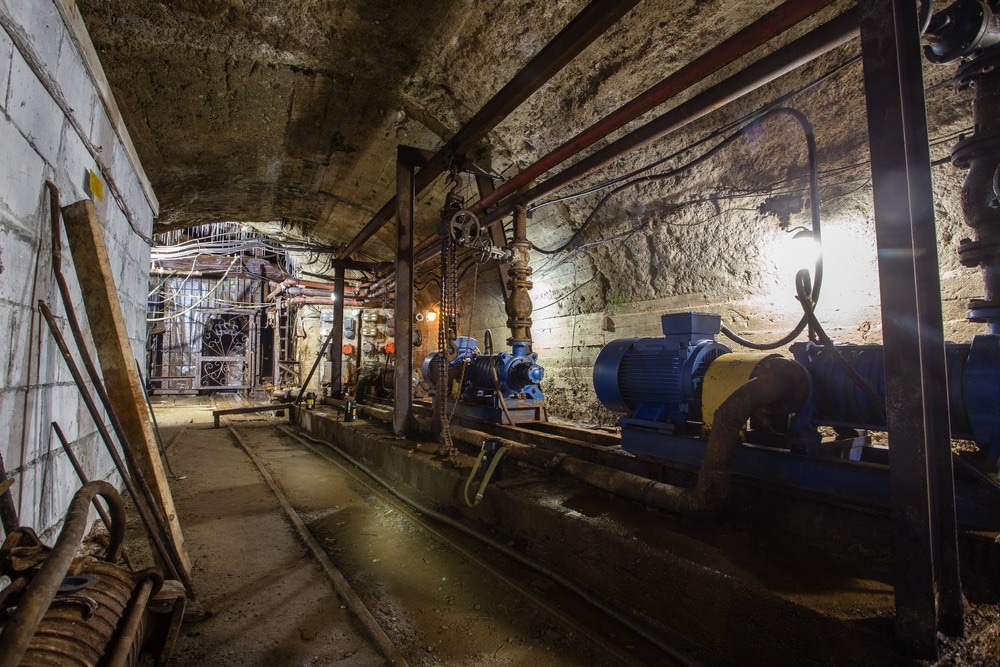A recent study published in Scientific Reports introduces a forward-thinking framework for modernizing mine water pumping stations through the integration of green hydrogen storage technology. This approach directly addresses the mining sector’s transition toward cleaner energy and decarbonization by leveraging renewable sources—most notably, hydrogen generated via water electrolysis. The central aim is to boost operational efficiency, cut carbon emissions, and align mine water management with broader sustainability objectives.

Image Credit: Mishainik/Shutterstock.com
Renewable Energy in Mine Water Management
Mine water pumping stations play a critical role in maintaining safe mining operations by removing excess water from underground. However, their substantial energy demands and associated carbon emissions have become a growing environmental concern. As initiatives like the European Green Deal gather momentum, the need to update energy-intensive infrastructure—especially in fossil fuel-dependent regions such as Poland—has become increasingly urgent.
Replacing grid electricity with photovoltaic (PV) systems at these stations offers a promising solution. Since solar energy generation often peaks when demand is low, robust energy storage is essential.
Green hydrogen provides an effective method for storing surplus solar power, which can then be used during periods of low generation or high demand. This improves reliability, reduces greenhouse gas emissions, and lowers the mining sector’s reliance on fossil fuels.
Framework for Integrating Hydrogen Storage
The research team developed 10 functional models to guide the modernization of mine water pumping stations. Each model is designed to optimize energy use, lower costs, and minimize environmental impact by combining PV systems for clean energy generation, battery storage for short-term needs, and green hydrogen production for long-term storage.
A case study in Poland’s Upper Silesian Coal Basin examined energy consumption patterns at a local pumping station. Mathematical simulations assessed each model’s energy output, investment requirements, and return on investment, taking into account geographical, technical, and economic factors.
The models explore three main integration strategies:
- Using solar energy directly at the pumping station
- Distributing surplus electricity to nearby industrial users
- Producing green hydrogen off-site for external sale, which avoids the high operational costs of on-site hydrogen combustion
Each approach was evaluated for energy efficiency, emissions reduction, and financial performance.
The study’s results confirm that green hydrogen is a viable energy source for mine water pumping stations. The F1 model stood out, generating around 6400 MWh annually from on-site PV systems—enough to cover more than 100% of the station’s energy needs—with a payback period of roughly 5.8 years.
The F2 model focused on selling excess electricity to nearby industries, offering additional revenue and a payback period of nearly 6.9 years. Other models, such as F3 and F4, considered energy sharing through existing transmission lines or selling to the national grid, though these were less efficient and profitable due to transmission losses.
Hydrogen storage models also received significant attention. The Hc model, which involved burning hydrogen on-site, proved uneconomical due to high operational costs. In contrast, the Hw and Hr models, which sold hydrogen locally, showed promising economic potential despite longer payback periods of around 17 years.
Integrating PV with battery storage provided efficient short-term energy buffering, while green hydrogen production enabled long-term storage to address the intermittent nature of renewables. The researchers estimate that implementing these systems in Polish coal mines could reduce CO2 emissions by 8,000 to 12,000 metric tons annually.
Applications and Broader Benefits of Green Hydrogen Storage in Mine Water Systems
Green hydrogen storage in mine water systems can significantly cut greenhouse gas emissions by reducing dependence on fossil fuel-based electricity. Purified mine water for hydrogen production also improves local water resource management and operational resilience.
These benefits extend beyond mining, with potential applications in wastewater treatment, municipal energy, agriculture, transport, and manufacturing. The proposed models offer a pathway to renew post-industrial areas by promoting clean energy projects and stimulating local economies. Installing PV systems on degraded land further supports sustainability goals.
The flexibility of these models allows adaptation to various geographic and operational contexts. The research highlights opportunities for mining companies to collaborate with renewable energy providers, fostering innovation and investment in clean technologies. Policymakers can leverage these insights to advance both economic and environmental objectives.
Toward a Sustainable Mining Future
Modernizing mine water pumping stations with green hydrogen storage marks a significant step in the global energy transition. PV-powered electrolysis offers a scalable, cost-effective solution for storing industrial energy and supporting cleaner mining practices. By embracing renewable energy for mine dewatering, mining companies can reduce their carbon footprints and contribute to a healthier environment.
The study underscores these models' economic and environmental advantages, demonstrating improvements in operational efficiency and reductions in environmental impact. Green hydrogen storage emerges as a strategic move toward sustainability, with implications beyond mining to transform energy use across various industries.
Further research could refine these models, explore financing mechanisms, and address regulatory hurdles. Overall, this work represents a pivotal advance toward sustainable mining, providing actionable insights that can accelerate the adoption of renewable energy and drive economic growth, ultimately leading to a low-carbon, resilient energy future.
Disclaimer: The views expressed here are those of the author expressed in their private capacity and do not necessarily represent the views of AZoM.com Limited T/A AZoNetwork the owner and operator of this website. This disclaimer forms part of the Terms and conditions of use of this website.
Source:
Chmiela, A., &. et al. Integrating green hydrogen storage into mine water pumping stations in the context of energy transition. Sci Rep 15, 17624 (2025). DOI: 10.1038/s41598-025-02295-2, https://www.nature.com/articles/s41598-025-02295-2